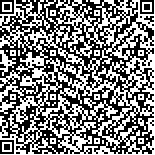本文已被:浏览 163次 下载 140次
Received:June 21, 2023 Published Online:January 20, 2024
Received:June 21, 2023 Published Online:January 20, 2024
中文摘要: 目的 采用蛋白质组学分析联合生物信息学技术,初步预测慢性阻塞性肺疾病(COPD)相关肺癌(COPD-LC)的生物学机制及其潜在的核心治疗靶点,并进行验证。
方法 收集2018年12月至2021年8月新疆医科大学第四临床医学院门诊就诊的COPD、肺癌患者以及体检的健康人员的尿液标本,并进行高通量测序。筛选差异蛋白并构建蛋白-蛋白相互作用(PPI)网络图,进行功能富集分析,进一步预测COPD-LC的关键靶点,最后采用基因表达数据库(GEO)对上述分子进行验证。
结果 蛋白质组学结果显示,与正常对照组相比,COPD组存在157个差异蛋白,其中上调67个,下调90个;与正常对照组相比,肺癌组存在306个差异蛋白,其中上调132个,下调174个;此外,本研究基于相互作用基因检索工具(STRING)平台,将上述差异蛋白进行PPI分析。基因本体(GO)和京都基因与基因组百科全书(KEGG) 分析结果显示,COPD-LC主要富集在细胞外区域、溶酶体、细胞外空间、淀粉酶活性、蛋白酶抑制剂活性、防御/免疫蛋白活性等方面。在GEO数据库中搜索关于COPD和肺癌患者微阵列数据,最终纳入GSE8581和GSE43346共2个数据集,在GSE8581数据集中共识别出13 605个差异基因,在GSE43346数据集中识别出3 403个差异基因,进一步分析GSE8581、GSE43346数据集与COPD-LC中差异基因的重叠程度,发现潜在转化生长因子β结合蛋白(LTBP)4、N-乙酰α-D-氨基葡萄糖苷酶 (NAGLU)、泛素蛋白连接酶E3成分N-识别蛋白4(UBR4)、DNA损伤结合蛋白1-CUL4相关因子(DCAF)5等4个重叠蛋白,最后在GEO数据集中获得验证。
结论 本研究初步揭示了LTBP4、NAGLU、UBR4、DCAF5等4个COPD-LC的潜在治疗靶点,其中靶点NAGLU、UBR4、DCAF5在COPD和肺癌中鲜有报道。上述蛋白在COPD和肺癌中均显著低表达,或可成为COPD-LC的重要诊断与治疗的生物标志物。
中文关键词: 肺癌; 慢性阻塞性肺疾病; 蛋白质组学; 潜在性转化生长因子β结合蛋白4 N-乙酰α-D-氨基葡萄糖苷酶 泛素蛋白连接酶E3成分N-识别蛋白4; DNA损伤结合蛋白1-CUL 4相关因子5
Abstract:Objective To preliminarily predict and verify the biological mechanism and potential core therapeutic targets of chronic obstructive pulmonary disease (COPD)-associated lung cancer (COPD-LC) based on proteomics analysis combined with bioinformatics technology.
Methods Urine samples of COPD, lung cancer patients and healthy people who visited the outpatient clinic of the Fourth Clinical Medical College of Xinjiang Medical University from December 2018 to August 2021 were collected and sequenced by high-throughput sequencing. Differential proteins were screened, protein-protein interaction (PPI) network diagrams were constructed, functional enrichment analysis was carried out to further predict the key targets of COPD-LC, and finally the above molecules were verified in the Gene Expression Omnibus (GEO) database. Results Proteomics results showed that there were 157 differential proteins in the COPD group compared with the normal control group, including 67 up-regulated proteins and 90 down-regulated proteins. Compared with the normal control group, there were 306 differential proteins in the lung cancer group, including 132 up-regulated and 174 down-regulated proteins. In addition, PPI analysis was performed for the above differential proteins based on the Search Tool for the Retrieval of Interacting Genes (STRING) platform. Gene Ontology (GO) and Kyoto Encyclopedia of Genes and Genomes (KEGG) analysis showed that COPD-LC was mainly enriched in extracellular region, lysosomes, extracellular space, amylase activity, protease inhibitor activity, defense/immune protein activity and other aspects. The microarray data of COPD and lung cancer were searched in the GEO database, and GSE8581 and GSE43346 were finally included. A total of 13 605 differential genes were identified in GSE8581 dataset, and 3 403 differential genes were identified in GSE43346 dataset. The degree of overlap between the differential genes in the GSE8581 and GSE43346 datasets was further analyzed, and 4 overlapping proteins were found in the two, including latent TGF-β binding protein (LTBP) 4, N-acetyl-alpha-glucosaminidase (NAGLU), ubiquitin protein ligase E3 component N-recognin (UBR) 4, and DNA damage binding protein 1 and cullin-ring ligase 4 associated factor (DCAF) 5, which were verified in the GEO database finally.
Conclusion This study has initially revealed 4 potential therapeutic targets for COPD-LC, including LTBP4, NAGLU, UBR4 and DCAF5, among which NAGLU, UBR4 and DCAF5 are rarely reported in the research of COPD and lung cancer. The above proteins are significantly low expressed in COPD and lung cancer, and may become significant biomarkers for the diagnosis and treatment of COPD-LC.
keywords: Lung cancer Chronic obstructive pulmonary disease Proteomics Latent TGF-β binding protein 4 N-acetyl-alpha-glucosaminidase Ubiquitin protein ligase E3 component N-recognin 4 DNA damage binding protein1 and cullin-ring ligase 4 associated factor 5
文章编号: 中图分类号:R734.2 文献标志码:A
基金项目:新疆维吾尔自治区科技厅青年科技拔尖人才项目(2022TSYCCX0028);自治区天山创新团队计划项目(2023D14004);吴阶平基金会临床科研专项(320.6750 2021-23-15)
引用文本:
